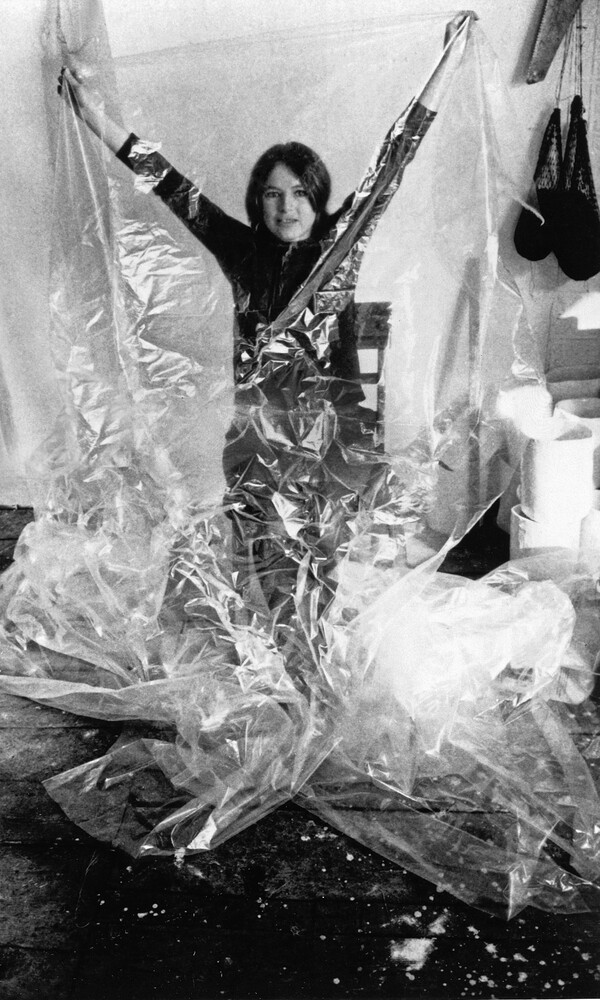Eva Hesse (Hamburg 1936 – 1970 New York) was one of the foremost women artists of the 20th century. In the mid-1960s she began to experiment with new materials that until then had never been used for sculpture, such as polyester, fibreglass and latex. Influenced by the emerging Minimal Art movement, Hesse developed an interest in serial processes and reduction, but in her own work these were accompanied by sensuous materiality and physicality. Her sculptures, which are now in the permanent collections of leading international museums, incorporate many different (and sometimes contrasting) elements. In Hesse’s drawings, too, a playful sense of rhythm and the juxtaposition of factors such as order and chaos, control and dynamism, precision and chance are key aspects.
Eva Hesse was born in Hamburg on 11 January 1936. When she was just two years old, her parents sent Eva and her older sister Helen to The Hague on a Kindertransport (children’s transport). The family was reunited in 1939 and emigrated to New York City, following brief stays in the Netherlands and England. In the 1950s, Eva Hesse studied painting at New York’s Cooper Union and continued her studies in the master class of Josef Albers at Yale School of Art and Architecture. From the mid-1960s onwards her work was exhibited in New York art galleries. During 1964/65, Eva Hesse and her husband, the sculptor Tom Doyle, spent over a year in Kettwig an der Ruhr at the invitation of Friedrich Arnhard Scheidt, a German industrialist and art collector, and his wife Isabel. This period is regarded as a turning point in Hesse’s artistic practice: inspired by materials she found in an abandoned textile factory, she produced her first three-dimensional artworks. When she returned to New York she devoted herself exclusively to sculpture and experimented with new materials. Eva Hesse’s breakthrough came in 1968, when she had her first solo exhibition as a sculptor at the Fischbach Gallery in New York. Just six months later she was diagnosed with a brain tumour, and she died in 1970 at the age of 34.
Eva Hesse. One More than One is the first major survey of the artist’s work to be presented in her native city. This exhibition of around 50 sculptures and drawings at the Hamburger Kunsthalle concentrates on the latter part of Hesse’s career – the highly productive period from 1966 until her early death in 1970. With major loans from leading international private collections and museums such as the San Francisco Museum of Modern Art, the Tate in London, the Museum of Modern Art in New York and the Centre Pompidou in Paris, it features many late works by Eva Hesse that have never or only rarely been shown in Germany. These include key sculptural pieces such as the five-part work Sans II (1968), Repetition Nineteen (1968) and Accession (1968), and drawings such as the minimalist Grid Drawings, the repetitive Circle Drawings and the late, very painterly Window Drawings, which Hesse herself described as “paper paintings”.
